If you’ve ever seen a band play live, you may notice the amount of gear that’s necessary for a group to put on a performance, with much of it looking peculiar to someone who’s outside of the industry.
For instance, some people ask what it is exactly that guitar players fiddle around with on stage.
Guitarists step on what’s called guitar pedals, stompboxes, or effects units, depending on which name you want to use. These pedals can be a number of different things, including dynamics processors, effects like delay or a flanger, or even just a regular tuner.
Every guitar player has their own idea of what’s important to carry with them, however, there are some units that nearly all players use and take with them on the road, with the most common being a guitar tuner.
Quality guitar-tuning pedals tend to be the most accurate of tuners out there, more so than a headstock tuner that has become very common these days, and probably even more so than the classic tuner that we all used to use, like one from Yamaha or Korg.
As I noted above, guitar tuners aren’t the only pedals that guitarists are using while on stage.
In this article, I’m going to explore what I think are some of the most common effects units, dynamics processors, and miscellaneous effects that guitar players use during a performance.
I won’t be exploring how pedals work and function, but I will outline what are some of the most common pedals out there and what they’re used for.
Most Common Guitar Pedals For Live Performances
1) Guitar Tuners
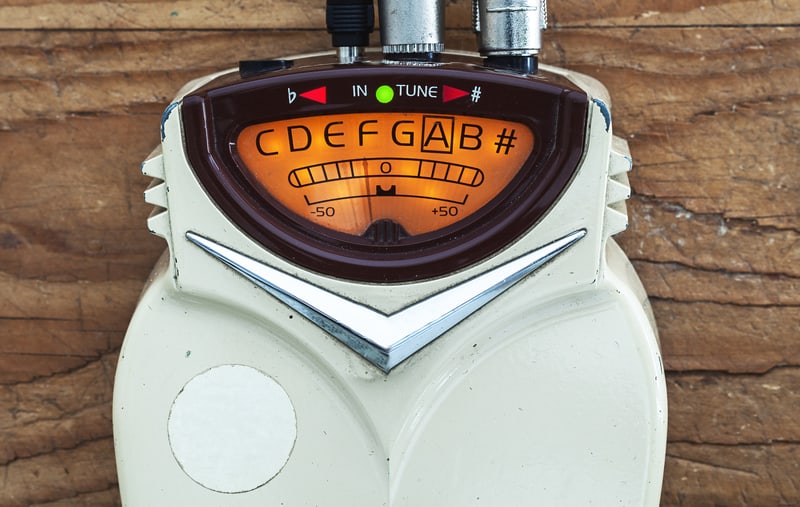
As I noted above, guitar-tuning pedals are one of those units that nearly all guitarists probably have, due to their accuracy and reliability during a live performance.
A guitar-tuning pedal is great because it can be hooked up to your pedalboard and supplied power by an external power source like every other pedal on the board, which means it’s reliable and you don’t have to worry about changing the battery or anything like that.
They are also more accurate than the headstock tuners that have become increasingly popular over the last few years.
Some of the biggest and most reputable companies to produce these pedals are Boss and Digitech, among many others.
2) Delay
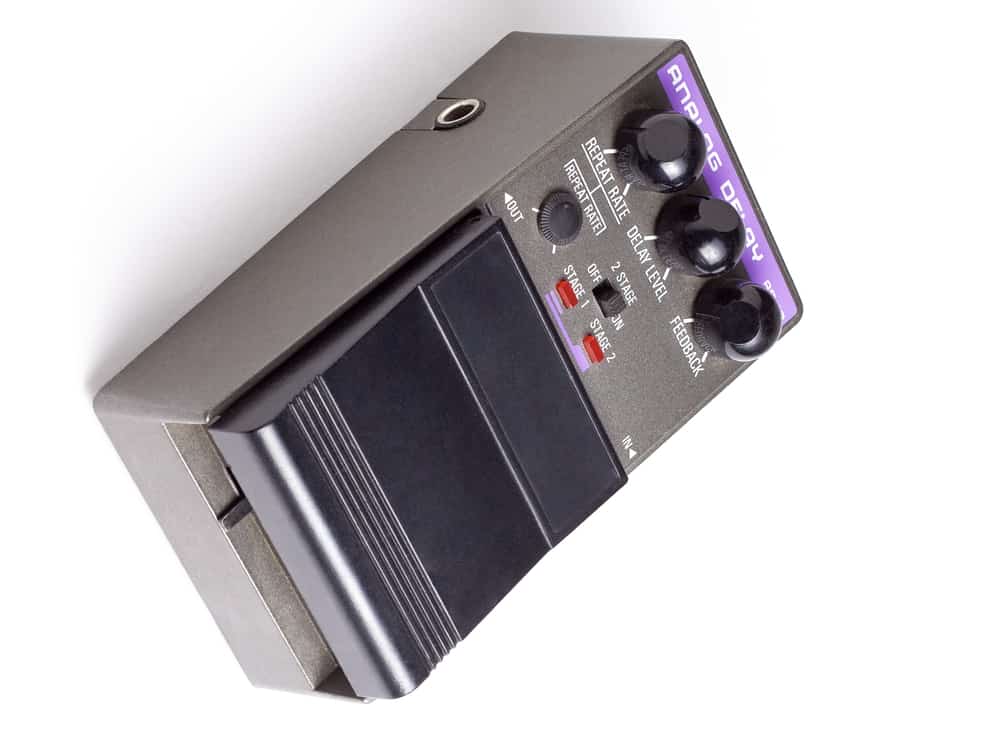
A delay pedal is an effects unit that, essentially, creates an echo effect at a speed and rate that’s determined by the pedal’s settings. Delay is easily one of the most common effects because it sounds great.
Delay is wonderful for creating ambiance, and it also has the effect of thickening up the sound, and, let’s be honest, hiding mistakes.
A delay effect, typically coupled with reverb, is one of the most common effects for the above reasons.
3) Distortion and Overdrive Pedals
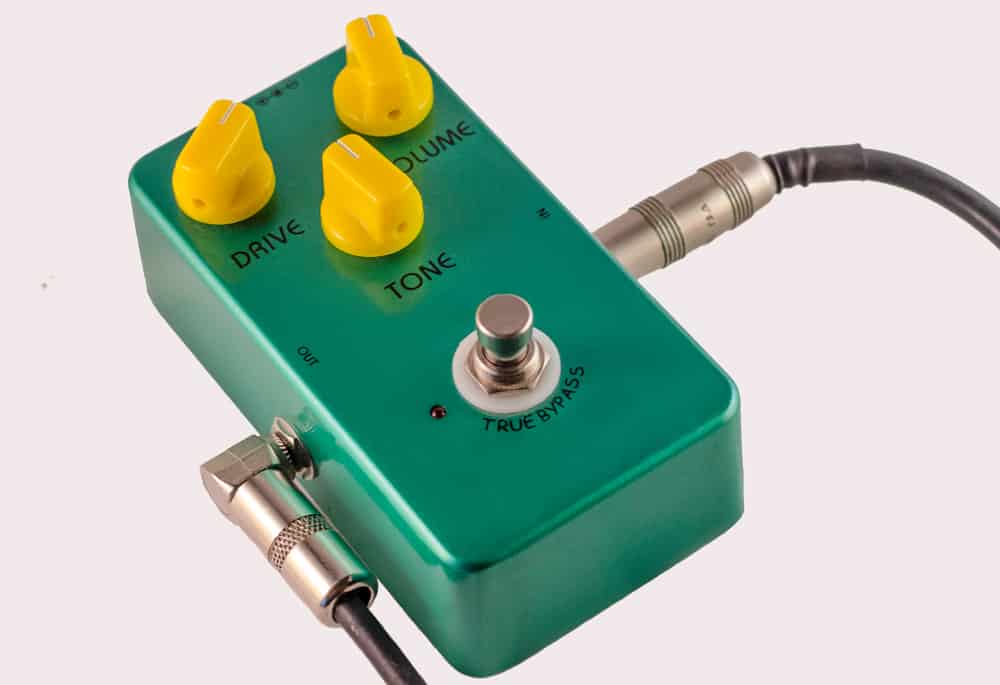
There are a ton of different distortion pedals on the market. Arguably the most popular distortion or overdrive pedal of all time, however, is the Ibanez Tubescreamer, which is the classic green pedal you’ve probably seen before.
The Ibanez Tubescreamer, alone, has countless models and renditions, with each one being a bit different from the other.
Of course, there are many other distortion pedals out there that guitarists use, including Fender’s Pugilist Distortion pedal and Wampler’s Sovereign Distortion.
There are many pedals that are designed for specific sounds and genres as well, so one could easily get lost when it comes to pedals.
Unlike the title of this sub-category may suggest, distortion pedals and overdrive pedals are actually a bit different from each other, with each type of pedal affecting the signal a little bit differently.
4) Wah Pedals
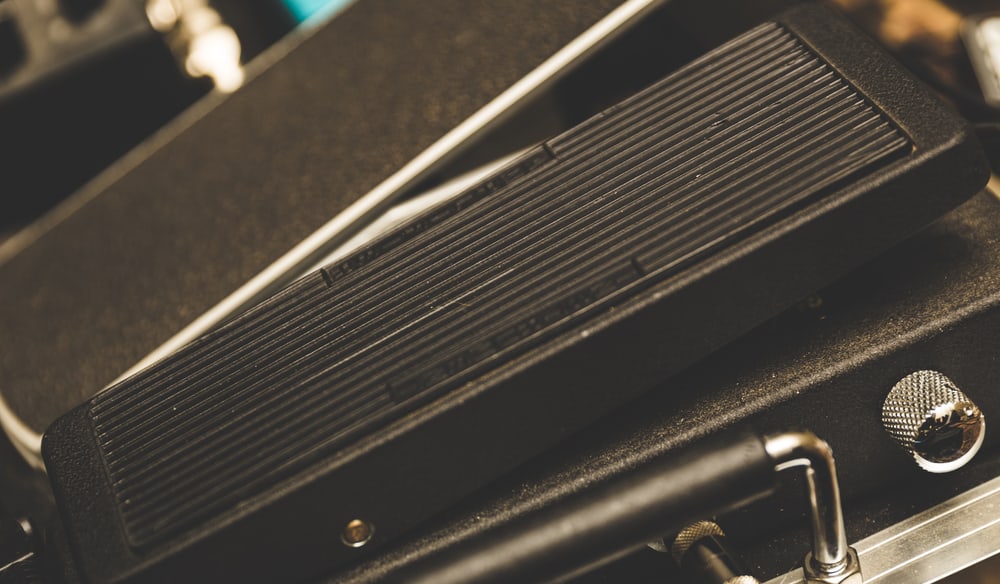
A Wah Pedal, for instance, a Dunlop Crybaby, is a pedal that accentuates low and high frequencies depending on how you use the pedal.
Typically, if your rock the pedal backward, this will have the effect of rolling off the highs and accentuating the lows of the guitar sound, whereas if you rock it forward, it’ll roll off the lows and accentuate the highs.
This is how a guitar player gets the characteristic “wah-wah,” sound that the name of the pedal onomatopoetically describes.
Some of the biggest names to use a Wah-Wah pedal, like the Dunlop Crybaby, includes Kirk Hammet and Jimi Hendrix, among many, many others.
5) Digitech Whammy Pedal
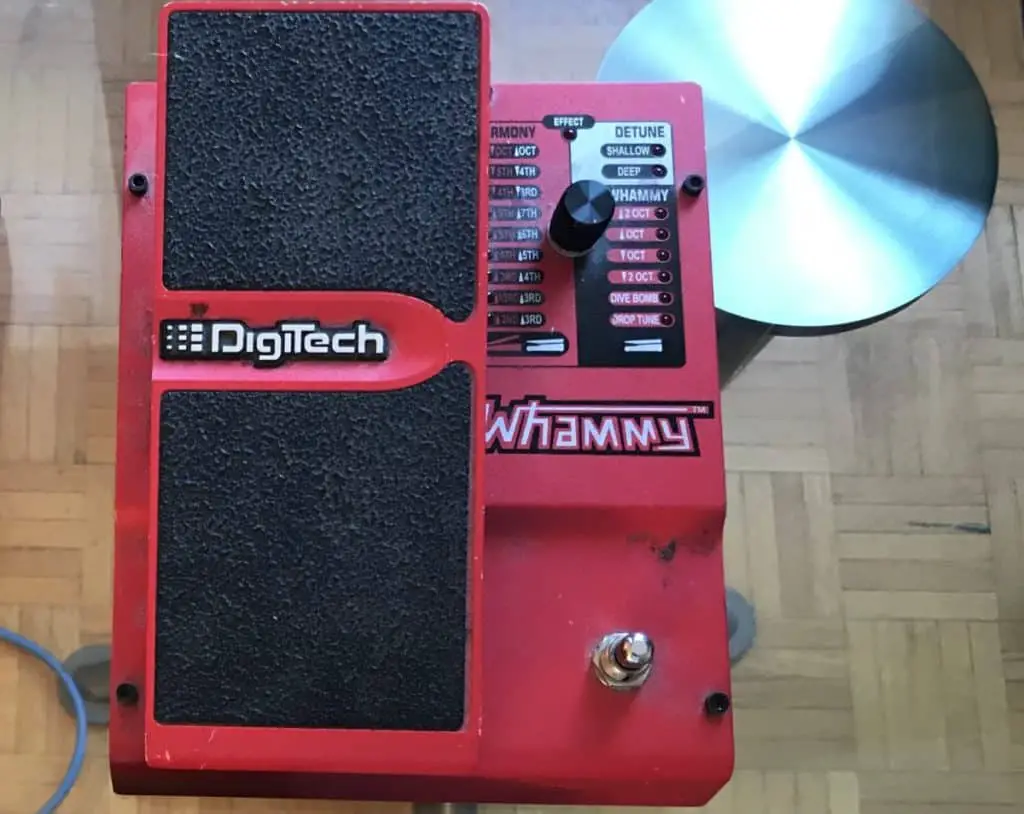
This guitar pedal is a huge red unit that arguably was popularized by the Rage Against The Machine guitarist, Tom Morello.
This pedal is known for being able to shift between octaves at a super-fast pace, and it also has other capabilities and functions, including being able to harmonize solos right out of the gate, detuning by a full step, or up-tuning a full step.
The Digitech Whammy Pedal’s most famous usage is in the Rage Against The Machine song, “Know Your Enemy,” which has the classic Tom Morello solo in it.
Another track that uses a Digitech Whammy Pedal is Audioslave’s “Like A Stone,” which is a lot more melodic. Make sure to check both of these songs out to hear what I’m talking about.
6) Compressors
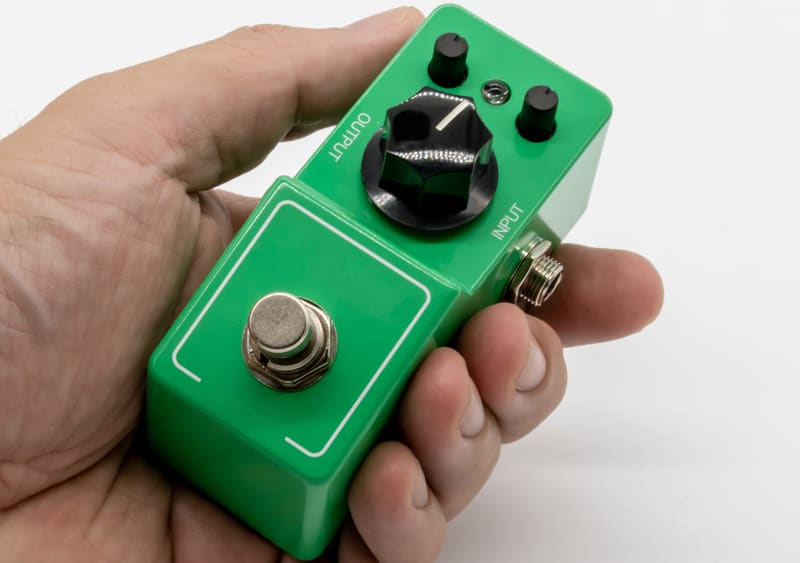
The compressor is arguably my most favorite guitar pedal to own and play with.
A compressor, essentially, increases the volume of the quiet sounds and attenuates the volume of the loudest sounds, effectively equalizing or balancing the sound.
A compressor can have multiple uses and effects, however, my favorite part of using a compressor is that it increases the sound of quiet guitar playing, such as slurs, or, as they’re commonly called, hammer-ons and pull-offs.
Compressors in guitar playing are a lot more common these days as well, especially in Progressive Metal or Progressive Rock, for instance, guys like Sithu Aye, Plini, and Intervals use compressor pedals to give their guitar tone more of a “plucky” sound.
One of the most famous uses of a compressor pedal is the opening riff to John Frusciante’s classic guitar part in Red Hot Chili Peppers’ track, “Under the Bridge,” off of Blood Sugar Sex Magik.
Out of all the pedals on this list, I would say it’s best to grab a compressor pedal, for instance, from MXR.
7) Multi-FX Units
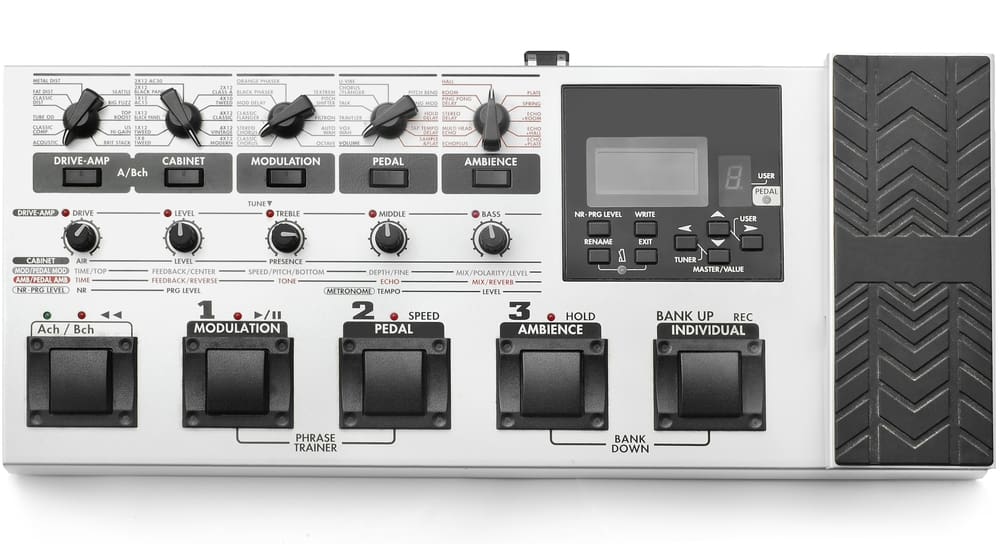
A multi-effects unit is basically a much bigger guitar pedal that utilizes a ton of different effects, dynamics processors, and other miscellaneous functions.
A multi-effects unit can also include an amp modeler which I’ve talked about before, like Line 6’s Pod system, which was a game-changer when first launched over ten years ago.
They’re meant to wrap up a ton of different options in one piece of gear for the sake of convenience and price.
A guitar pedal that performs one function extremely well is probably going to be better, but the versatility and multiple uses of a multi-FX unit make it a great purchase.
A multi-FX unit can come with a variety of different sounds and effects, including delay, reverb, chorus, flangers, compressors, distortion, fuzz, and much more.
Some common criticisms of multi-FX units, however, are that they’re digital and lack the quality and vibrance of a real, individual, analog stompbox.
Multi-FX units are digital, and many people have issues with this.
Moreover, some multi-effects units can be complicated to use, with tons of different settings, menus, and buttons to scroll through.
Boss GT-1 is one of the most popular multi-FX units out there, and there are many from Line 6 as well, including the Line 6 Pod HD500x.
8) Dedicated Power Supply
A Power Supply unit is a separate piece of equipment that provides power to the pedalboard.
As you might’ve guessed, if you own 10-20 different guitar pedals and they’re all attached together in one signal chain on one board, there is a certain amount of power needed to make all of them function.
A power supply is essential for delivering necessary power to one’s gear.
YouTube Video Tutorial
Conclusion
Despite the fact guitar and amplifier sales are down right now, stomp-boxes, on the other hand, are a booming and thriving business. All one has to do is walk into a music store and look at their massive selection of guitar and bass pedals.
The reason for their popularity is really quite simple, which is that they’re incredibly useful, cool, and fun to play with, while also looking super interesting.
While using a DAW, such as Garageband, Logic Pro X, FL Studio, or Reaper, pedals are fantastic and incredibly simple to use.
Nothing beats an actual effects unit or dynamics processor in real-time. There is no delay plug-in that sounds as good as a real delay pedal, at least not right now anyway.
I also think it’s important to note that I didn’t mention a lot of other guitar pedals out there that do a ton of things for your sound and set-up, including EQ pedals, volume faders, harmonizers, etc.

 Written By :
Written By :